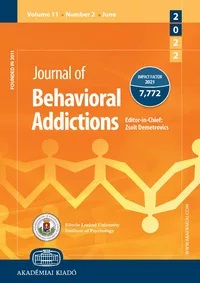Problematic use of digital media in children and adolescents with a diagnosis of attention-deficit/hyperactivity disorder compared to controls. A meta-analysis
Problematic use of digital media in children and adolescents with a diagnosis of attention-deficit/hyperactivity disorder compared to controls. A meta-analysis
Author(s): Anna Maria Werling, Sajiv Kuzhippallil, Sophie Emery, Susanne Walitza, Renate DrechslerSubject(s): Behaviorism
Published by: Akadémiai Kiadó
Keywords: problematic use of the internet; ADHD; children; adolescents; digital media; meta-analysis
Summary/Abstract: Objective. Problematic use of digital media and problematic use of the internet (PUI) in particular are growing problems in the general population. Moreover, studies have shown links between PUI and symptoms of attention-deficit/hyperactivity disorder (ADHD). This meta-analysis investigated whether children and adolescents with ADHD are more often affected by PUI compared to control groups. Method. Multiple databases (EBSCOhost, Pubmed) were reviewed. Studies were eligible if individuals (aged 6–18 years) were diagnosed with ADHD, assessed on PUI-related measures, and compared to non-clinical or/and clinical controls without a diagnosis of ADHD. Out of 3,859 identified studies, 14 studies assessing 2,488 participants met all inclusion criteria. Four meta-analyses examining time-based and scale-based measures, different informants and non-clinical vs. clinical controls using random-effects models were performed. Funnel plots were used to investigate publication bias. Results. The analyses revealed significantly more severe PUI in individuals with ADHD compared to controls, both when PUI was assessed via rating scale (scaled-based) and via units for time (time-based measures). Different informants (self- vs. parent-rating) had no impact on results. Differences in PUI between groups with ADHD and non-clinical controls were significant, whereas differences between ADHD and clinical controls were not. Due to the high heterogeneity observed and the small sample sizes, these latter findings should be interpreted cautiously. Conclusion. Children and adolescents with ADHD show more severe PUI compared to non-clinical controls without ADHD. However, the small number of studies does not allow for a systematic comparison between ADHD and groups with other psychopathologies.
Journal: Journal of Behavioral Addictions
- Issue Year: 11/2022
- Issue No: 2
- Page Range: 305-325
- Page Count: 21
- Language: English

